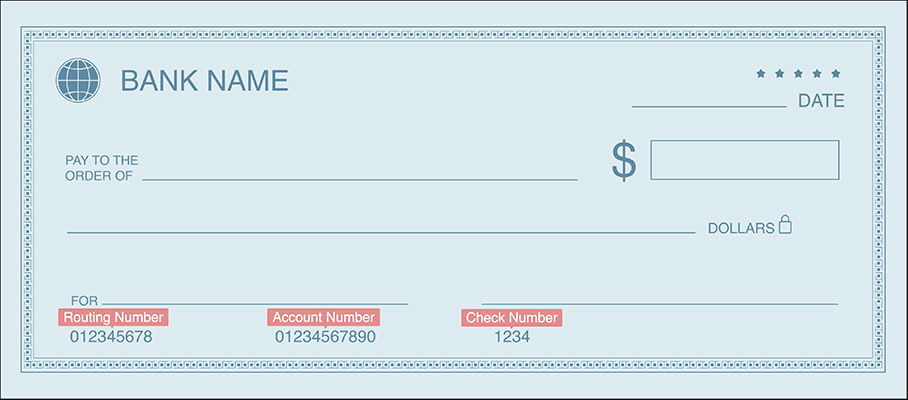Picking a bank isn’t something most people think about often—but it can have a big impact on your day-to-day finances. The right bank can help you avoid fees, grow your savings faster, and make managing money way less stressful.

Whether you want the latest mobile banking tools, better interest rates, or just a place that won’t nickel and dime you, this guide breaks down exactly what to look for—so you can choose a bank that works for your life, not against it.
What to Look for in a Bank
Before comparing banks, think about what matters most to you. Are you trying to avoid fees? Earn better interest? Get access to a solid mobile app? Your ideal bank will depend on how you use your money day to day—and what you want your money to do for you.
Here are a few questions to ask yourself:
- Do you mostly bank online or visit branches?
- How often do you use ATMs, and do you need access to them nationwide?
- Are you trying to grow your savings, rebuild your credit, or just avoid overdraft fees?
- Do you need personal or business accounts—or both?
Once you know what you need from a bank, it becomes much easier to filter out the ones that don’t fit.
Types of Banks Explained
Not all banks work the same way. Here’s a quick rundown of the most common types—and the pros and cons of each.
Traditional Banks
These are the big names with branches and ATMs across the country. You can walk in, talk to someone, and take care of most banking needs in person. But you may also deal with:
- Monthly maintenance fees
- Lower interest rates on savings
- Higher minimum balance requirements
Online Banks
Online banks skip the overhead of branches and pass the savings on to you. Most offer:
- Higher interest on savings accounts and CDs
- No monthly maintenance fees
- Modern apps with features like mobile check deposit and instant transfers
The tradeoff? No physical locations—and cash deposits can be tricky.
See also: Best Neobanks of 2025
Credit Unions
Credit unions are nonprofit institutions that exist to serve their members. That means:
- Lower fees and better interest rates
- Personalized service
- Community-focused benefits
However, you may need to meet eligibility requirements, and ATM/branch access might be more limited unless they participate in shared networks.
See also: Best Nationwide Credit Unions of 2025
Common Types of Bank Accounts
Banks and credit unions offer several account types to help you manage and grow your money. Here are the most common ones:
- Checking Account – Used for everyday spending like groceries, bills, and direct deposit. Look for one with no monthly fees or overdraft penalties.
- Savings Account – A place to park your money and earn interest. Great for emergency funds and short-term goals.
- Money Market Account – Offers higher interest rates than regular savings accounts but often requires a higher balance to avoid fees.
- Certificate of Deposit (CD) – Locks your money away for a fixed period (like 6 or 12 months) in exchange for a higher interest rate. Early withdrawals come with a penalty.
Choosing the right mix of accounts depends on your goals—more on that next.
How to Match a Bank to Your Financial Goals
The best bank for you depends on what you’re trying to achieve with your money.
If your goal is to…
- Build an emergency fund – Look for a high-yield savings account with no monthly fees.
- Avoid overdraft fees – Find a checking account with no overdraft penalties or one that offers free overdraft protection.
- Earn more interest – Consider a money market account or CD with competitive rates.
- Keep things simple – Choose a bank that lets you manage everything—checking, savings, transfers, and bill pay—from a single dashboard.
Make sure the bank offers the specific account types and features you need, then compare fees, interest rates, and access options before you open an account.
Watch Out for These Fees
Bank fees can quietly eat into your balance if you’re not paying attention. Here are the most common ones to watch out for—and how to avoid them.
- Monthly Maintenance Fees – Some banks charge $5 to $15 just for holding your account. Look for accounts that waive the fee if you set up direct deposit or keep a minimum balance.
- Overdraft Fees – If your account dips below zero, you could get hit with a $30+ fee per transaction. Choose a bank that offers no-fee overdraft protection or lets you link a savings account as backup.
- ATM Fees – Using an out-of-network ATM can cost $3 or more per transaction. Pick a bank with a large ATM network or one that reimburses ATM fees.
- Foreign Transaction Fees – If you travel or shop internationally, check whether your debit card adds a foreign transaction fee (typically 1% to 3%) for foreign purchases.
Tip: Most banks list their full fee schedules online. If you can’t find it, ask before opening an account.
Make Sure It’s Convenient
Your bank should work around your life—not the other way around. Here’s what to consider when it comes to everyday access:
- Branch Locations – If you like face-to-face service or need to deposit cash, choose a bank with branches nearby.
- ATM Network – Make sure your bank offers easy access to ATMs where you live, work, or travel. Some online banks offer fee-free access to large networks like Allpoint or MoneyPass.
- Mobile App & Online Banking – Look for features in their mobile banking app like mobile check deposit, real-time transaction alerts, easy money transfers, and bill pay from your dashboard.
- Customer Support – When things go wrong, you want answers fast. Make sure the bank offers support by phone, chat, or email—ideally 24/7.
Hidden Red Flags That Could Cost You Later
Some banking problems aren’t obvious until you’ve already signed up. Here are less-talked-about red flags that can signal future headaches:
- Delays in Funds Availability – Some banks hold mobile check deposits or transfers for several business days, even for long-time customers. That can mess with your cash flow if you’re not prepared.
- Inflexible Overdraft Policies – It’s not just about the fees. Some banks don’t allow you to turn off overdraft coverage or set your own limits. Others deny small purchases even when you have pending deposits.
- Outdated or Clunky Tech – A mobile app that crashes or lacks key features like bill pay, spending insights, or card controls can slow you down. Check user reviews on the App Store or Google Play before you open an account.
- Unclear Terms on “Free” Accounts – Some accounts are marketed as free but quietly charge for things like paper statements, inactivity, or too many transfers. Always check the fee schedule.
- Bad Communication From the Bank – If it’s hard to get someone on the phone or support emails go unanswered, that’s a bad sign. You want a bank that’s easy to reach when something goes wrong.
Don’t Skip the Fine Print: Security, Stability, and Reputation
It’s not just about convenience and rates—your money needs to be safe.
- FDIC or NCUA Insurance – Make sure your bank (or credit union) is backed by federal insurance. This protects up to $250,000 per depositor, per account type.
- Two-Factor Authentication – Adds a second layer of login protection (like a text code or fingerprint scan).
- Fraud Monitoring & Alerts – Banks that monitor for unusual activity and send instant alerts can help stop fraud before it gets worse.
- Company Reputation – Look up customer reviews, Better Business Bureau ratings, and any regulatory actions. A pattern of complaints or poor service is a red flag.
- Longevity & Stability – Choose a bank with a solid track record. Well-established banks or credit unions are less likely to fold or merge suddenly.
Bonuses & Incentives: Are They Worth It?
Banks love to offer sign-up perks—but not all rewards are created equal. Here’s what to keep in mind:
- Cash Bonuses – Many banks offer cash bonuses of $50–$500 for opening a new account and setting up direct deposit. Just make sure you meet the requirements (like keeping the account open for 90+ days).
- Rewards Programs – Some debit cards offer cash back or points on everyday purchases. Others reward you for hitting savings milestones.
- Limited-Time Offers – Watch for seasonal or regional promotions that may only be available for a short period.
Warning: Don’t chase a bonus if the account isn’t a good long-term fit. Fees and restrictions could cancel out any upfront perk.
Final Thoughts
The best bank for you depends on how you manage your money—and what you value most.
Start by thinking about your daily habits and financial goals. Then, look for a bank that matches those needs with the right mix of low fees, helpful tools, strong security, and solid customer support.
Take your time, read the fine print, and don’t be afraid to compare multiple options before you commit. A little research upfront can save you a lot of frustration later.



